Travel
How Much Do Boats Cost? A Comprehensive Guide to Pricing and Expenses
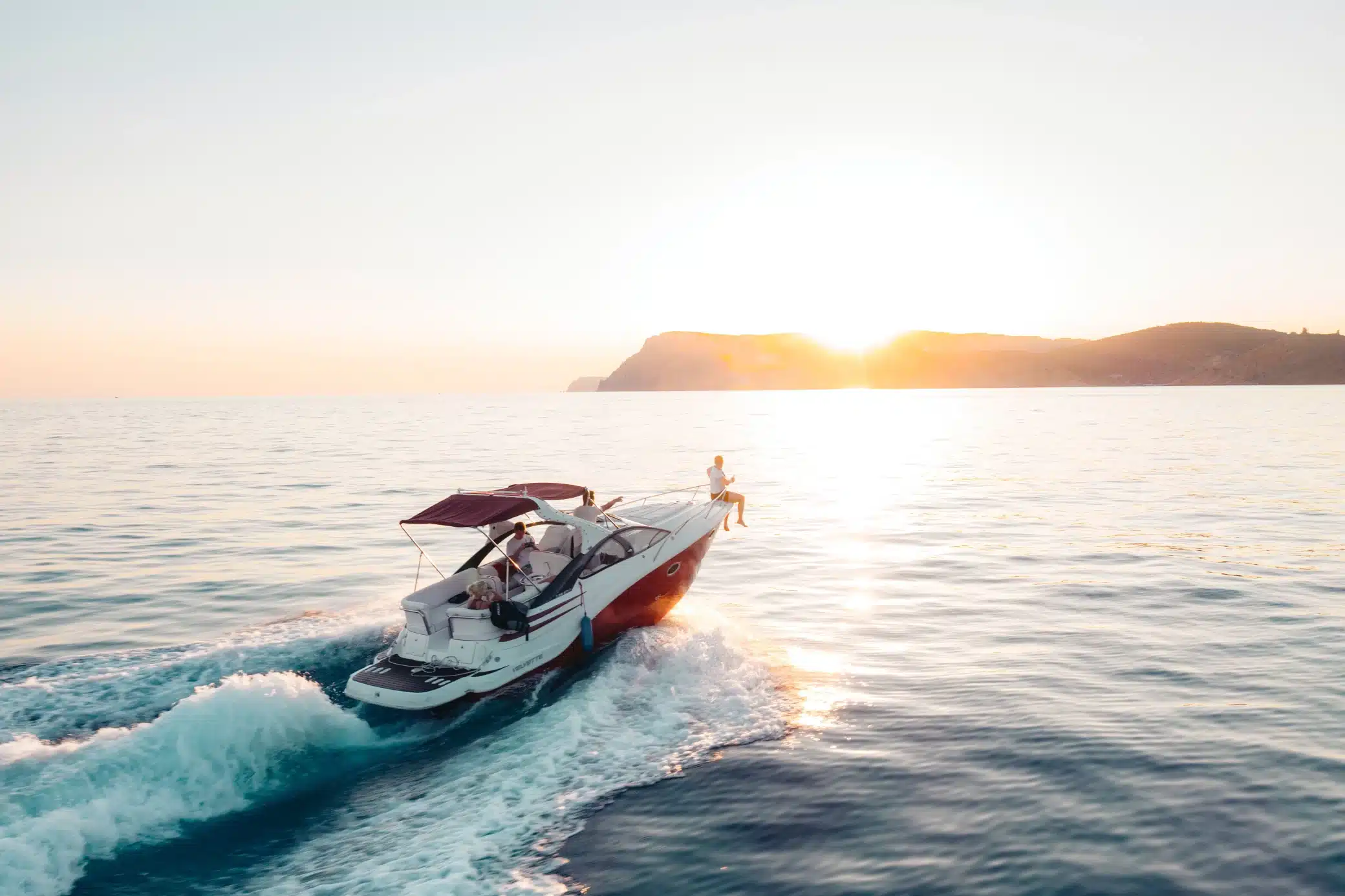
Table of Contents
Understanding the Factors: Exploring the various elements that contribute to boat pricing.
When it comes to understanding the cost of boats and How Much Do Boats Cost, it’s important to consider the factors that contribute to their pricing. Here are some key elements to explore:
- Boat size: Generally, larger boats tend to have higher price tags due to the increased materials and manufacturing costs involved.
- Construction materials: The type of materials used in the boat’s construction can influence its price. High-quality materials such as fiberglass or carbon fiber can contribute to a higher price point.
- Features and customization: Boats with advanced features and customization options, such as state-of-the-art electronics, luxury amenities, or custom paint jobs, will typically come with a higher price tag.
- Brand reputation: Established and reputable boat manufacturers often command higher prices due to their reputation for quality and craftsmanship.
- Market demand: The demand for specific boat models or types can also impact pricing, with popular or in-demand boats potentially costing more.
Boat Types and Price Ranges: How Much Do Boats Cost
When considering boat ownership, it’s essential to understand the cost differences between various boat types. Here is an analysis of different boat types and their respective price ranges:
Jon boat Cost: Start at $500 and $3,000
Sailboats: Sailboats can range from small day sailers to larger cruising boats. Price factors include size, construction materials, rigging, and additional features. Sail Boats start at $12,000
Motorboats: Motorboats encompass a wide variety of styles, including Jon boats, Bow Riders, Deck Boats, and Speed Boats. Prices vary depending on factors like boat size, engine power, features, and brand. Motorboats Start at $10,000 and $20,000 +
Catamarans: Catamarans, known for their stability and spaciousness, generally come at a higher price due to their larger size, advanced design, and increased construction costs. Catamarans start at $10,000
Pontoon Boats & Bow Riders: These versatile recreational boats come in a range of sizes and amenities. The price can vary based on size, construction materials, engine capacity, and additional features. Bow Rider Boats and Pontoon boats start at $15,000 and $50,000
Fishing Boats: Designed specifically focar angling, fishing boats can range from small, basic models to larger, fully-equipped boats with advanced fishing features. The price depends on the boat’s size, specialized fishing equipment, and included amenities. Fishing Boats start at $25,000 and $100,000
Speed Boats: Start at $75,000
Trawlers and Canal Boats: These boats are often associated with cruising and long-range travel. Their prices are influenced by size, construction, onboard amenities, and fuel efficiency. Trawlers start at $90,000
Boat cost is influenced by:
Size and style
Brand
New vs used status
Demand
Location
Features and extras
Canal Boats and House Boats: start at $100,000
Cabin Cruisers: Cabin cruisers offer comfortable onboard living spaces and often have additional amenities such as kitchens, bathrooms, and sleeping quarters. Prices are determined by boat size, features, and overall condition. Cabin Cruisers cost between $100,000 and $500,000
Yachts: Yachts are luxurious, high-end boats that can vary greatly in size and amenities. Prices are typically higher due to their prestigious brand, advanced features, and luxury finishes. Yachts start at $300,000
It’s worth noting that prices can significantly vary within each boat type category based on factors such as brand reputation, condition (new or used), optional features, and regional market demand. Understanding these differences and doing a thorough research will help potential buyers choose the boat type that best fits their preferences, intended use, and budget.
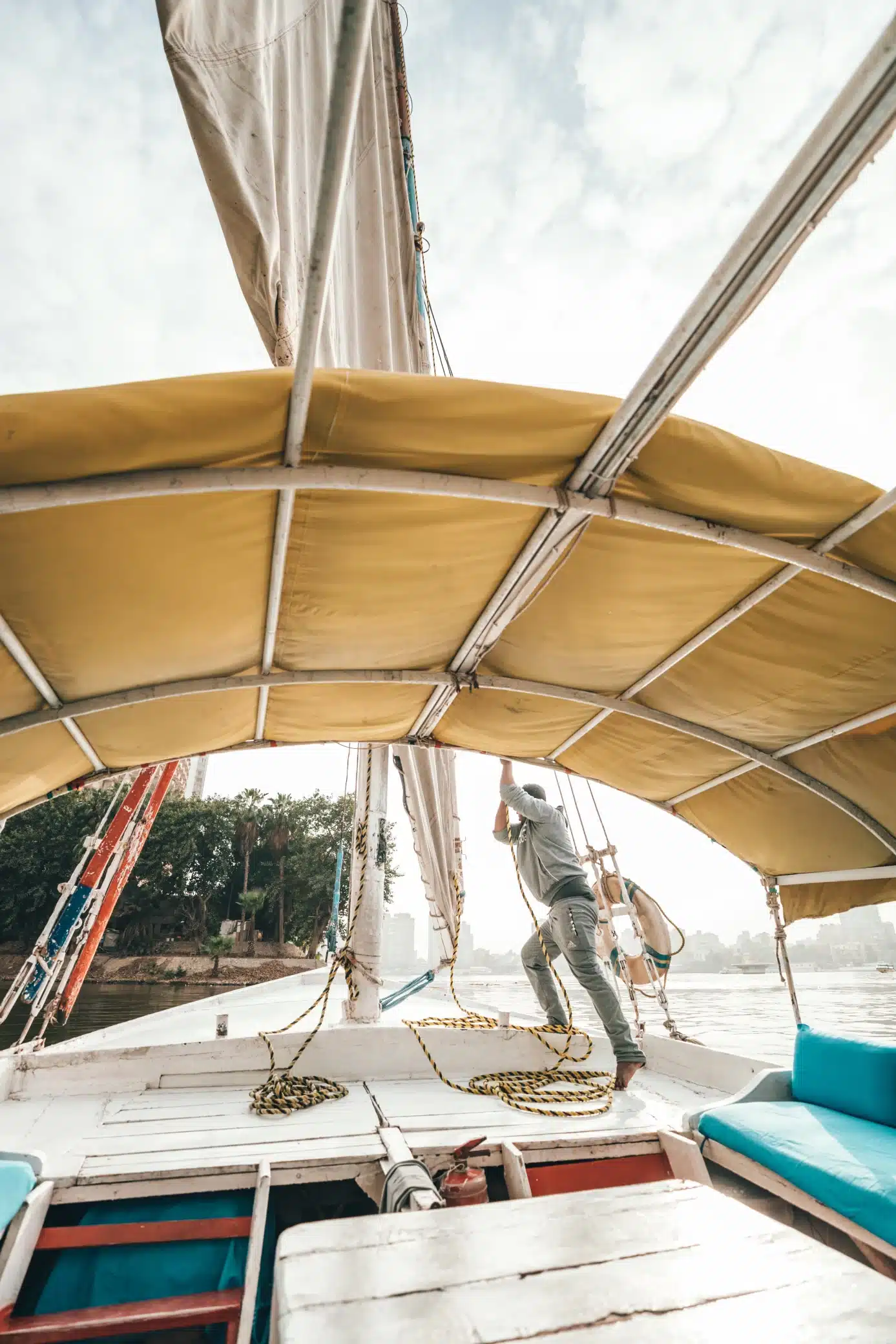
Brand and Quality: How boat brand reputation and craftsmanship impact pricing.
When it comes to purchasing a boat, brand reputation and craftsmanship play significant roles in determining the pricing. Here’s an analysis of how these factors impact the cost of boats:
Brand Reputation:
– Established brands with a long-standing history and positive reputation in the industry often command higher prices due to the perceived quality and reliability associated with their name.
– Well-known brands invest heavily in research, development, and innovation, leading to advanced features, cutting-edge technology, and superior performance, which can contribute to higher price points.
– Popular brands also tend to have a greater market demand, which can affect their pricing as supply and demand dynamics come into play.
Craftsmanship and Construction:
– The level of craftsmanship and the attention to detail in the boat’s construction directly influence its pricing.
– Boats built with high-quality materials and precision engineering are likely to have higher price tags due to the superior build quality, durability, and overall finish.
– Superior craftsmanship not only ensures a more robust and appealing boat but also contributes to its performance, comfort, and longevity, which can justify the higher price.
R&D and Innovation:
– Boat manufacturers that invest heavily in research and development to constantly improve their designs, engineering, and performance capabilities often have higher-priced models.
– Innovation in hull design, propulsion systems, ergonomics, and onboard features adds value to a boat and justifies the higher price, as consumers are willing to pay for the latest technology and advancements.
Warranty and After-Sales Service:
– Reputable boat brands often provide comprehensive warranties and reliable after-sales service, which can influence their pricing. Customers are willing to pay more for the peace of mind that comes with excellent customer support and warranty coverage.
While brand reputation and craftsmanship are important elements that impact boat pricing, it’s crucial for buyers to carefully evaluate their specific needs, compare different brands, and consider factors such as performance, features, durability, and customer support to make an informed decision. It’s not always necessary to choose the most expensive brand, but finding the right balance between brand reputation, craftsmanship, and affordability is key. Factors that Influence Pricing: Examining the impact of boat size, construction materials, features, and customization options.
Factors that Influence Pricing: Examining the impact of boat size, construction materials, features, and customization options.
When it comes to determining the price of a boat, several key factors come into play. Here is an analysis of the factors that influence boat pricing:
1. Boat Size:
– The size of a boat is a significant factor in determining its price.
– Generally, larger boats require more materials, have more complex systems, and often offer more spacious accommodations, all of which contribute to a higher price tag.
– Smaller boats, such as personal watercraft or small fishing boats, are typically more budget-friendly compared to larger vessels, like yachts or cabin cruisers.
2. Construction Materials:
– The materials used in a boat’s construction have a significant impact on its pricing.
– High-quality materials, such as fiberglass, carbon fiber, or aluminum, are more expensive, but they offer durability, better performance, and a longer lifespan.
– Less expensive boats may be constructed using materials like wood or lower-grade composites, but these materials may require more maintenance and could have a shorter lifespan.
3. Features and Amenities:
– The inclusion of various features and amenities can significantly affect the price of a boat.
– Boats with advanced navigation systems, entertainment packages, luxury interiors, and enhanced comfort features often come with a higher price tag.
– Features like air conditioning, marine electronics, onboard kitchens, and multiple sleeping quarters add value to a boat but also increase its cost.
4. Customization Options:
– Customization allows boat buyers to tailor the vessel to their specific preferences and needs.
– Boat manufacturers and dealers often offer customization options in terms of finishes, colors, flooring, seating arrangements, and additional features.
– The more extensive the customization and personalization, the higher the price due to additional manufacturing processes and materials required.
Some common features and choices that might affect the total cost of your boat are:
- State-of-the-art Chartplotters
- Stereo and AV systems
- Specialty lighting
- Battery chargers
- Sunshades
- Swim platforms (hydraulic or otherwise)
- Windlass anchors
- Autopilot and GPS Position Holding
- Power steering
- Joystick Controls
- Custom finishes and flooring
- Vacuflush Head Systems
- Satellite Weather Tracking
- Air conditioning and climate control in cockpits or cabins
While boat size, construction materials, features, and customization options are significant pricing factors, it’s essential to consider budget, intended use, and personal preferences when selecting a boat. Analyzing these factors will help potential buyers make informed decisions and find a boat that offers the right balance between price and desired features.
New vs. Used Boats: Weighing the pros and cons of buying new versus pre-owned boats and their respective price ranges.
When considering purchasing a boat, one of the crucial decisions to make is whether to buy a new or a pre-owned boat. Here is an analysis of the pros and cons of each option and their respective price ranges:
Buying New:
– Advantages:
– Brand-new boats offer the latest designs, technology, and features.
– Customization options are typically available, allowing buyers to tailor the boat to their preferences.
– New boats come with manufacturer warranties, providing peace of mind and protection.
– Maintenance and repair costs are usually lower in the early years of ownership.
– Price Range:
– New boats are generally more expensive compared to their pre-owned counterparts due to their pristine condition, warranty coverage, and up-to-date features.
– The price range varies depending on the boat type, size, brand and included features.
Buying Pre-owned:
– Advantages:
– Pre-owned boats offer a more affordable option for buyers with budget considerations.
– A wider selection of boat types, brands, and models are available in the pre-owned market.
– Experienced boat owners often sell their well-maintained vessels, providing access to boats in excellent condition.
– Pre-owned boats may come with additional equipment and accessories that were added by the previous owner.
– Price Range:
– The price range for pre-owned boats varies significantly, depending on factors such as age, condition, brand, and included features.
– Older boats or those with more wear and tear may have a lower price range, while newer pre-owned boats or those in excellent condition may be priced closer to the lower end of the new boat range.

It’s essential for boat buyers to carefully weigh the pros and cons of buying new versus pre-owned boats based on their individual preferences, budget, and intended use. Considering factors such as warranty coverage, desired features, maintenance costs, and overall condition will help make an informed decision that aligns with personal requirements and financial capabilities.
Hidden Costs: Uncovering additional expenses beyond the initial purchase price, including maintenance, insurance, mooring fees, and fuel.
When buying a boat, it’s important to factor in the hidden costs associated with boat ownership. Beyond the initial purchase price, several additional expenses can impact the overall cost of owning and maintaining a boat. A few of the most important hidden expenses to think about are these:
1. Maintenance:
– Regular maintenance is essential to keep a boat in good condition and ensure its longevity.
– Maintenance costs include routine tasks like cleaning, detailing, and regular engine servicing.
– Additional expenses may arise for repairs, replacement parts, and specialized maintenance services for specific equipment on board.
2. Insurance:
– Boat insurance is necessary and typically part of responsible ownership.
– Insurance costs vary depending on factors such as boat value, size, type, intended use, and location.
– Factors like the owner’s boating experience, claims history, and the deductible level also affect insurance premiums.
3. Mooring Fees:
– Mooring or berthing fees are charges for storing or docking the boat in a marina, yacht club, or other designated areas.
– Mooring fees vary widely depending on the location, duration of the mooring, facilities offered, and demand for space.
– Some areas have waiting lists for mooring spaces, which may necessitate temporary or alternative mooring options that incur extra costs.
4. Fuel and Operating Costs:
– Boating involves ongoing fuel and operating costs, including the cost of fuel itself.
– Fuel consumption varies based on factors such as boat size, engine type, cruising speed, and usage patterns.
– Additional operating expenses may include oil changes, filters, lubricants, specialized fluids, and various supplies required for maintenance and operation.
Some common features and choices that might affect the total cost of your boat are:
- State-of-the-art Chartplotters
- Stereo and AV systems
- Specialty lighting
- Battery chargers
- Sunshades
- Swim platforms (hydraulic or otherwise)
- Windlass anchors
- Autopilot and GPS Position Holding
- Power steering
- Joystick Controls
- Custom finishes and flooring
- Vacuflush Head Systems
- Satellite Weather Tracking
- Air conditioning and climate control in cockpits or cabins
5. Storage and Winterization:
– For boat owners who need to store their boat during the off-season or periods of non-use, storage fees may apply.
– Winterization, in colder climates, is necessary to protect the boat’s systems and prevent damage from freezing temperatures. Professional winterization services may incur additional costs.
It’s important to budget for these hidden costs to ensure a realistic understanding of the overall cost of boat ownership. Maintaining a well-maintained boat, proper insurance coverage, suitable mooring arrangements, and setting aside funds for fuel and operating expenses are essential to enjoy a trouble-free boating experience.
Financing Options: Exploring loan and financing options to help manage the cost of boat ownership.
When considering the purchase of a boat, financing options can be a helpful tool to manage the upfront cost and make boat ownership more affordable. Below are some popular funding alternatives to consider:
1. Boat Loans:
– Boat loans are specifically tailored for financing the purchase of boats and watercraft.
– These loans are offered by financial institutions, such as banks, credit unions, and specialized marine lenders.
– Boat loans typically require a down payment, and the loan term can vary depending on the lender and the loan amount.
– Interest rates on boat loans are influenced by factors such as credit history, loan term, and the age and type of boat being financed.
2. Personal Loans:
– Personal loans can be used to finance a boat purchase, especially for smaller boats or vessels with a lower price tag.
– Personal loans are typically unsecured loans and can be obtained from banks, credit unions, or online lenders.
– Interest rates on personal loans may be higher compared to boat loans, and the loan term is generally shorter.
3. Home Equity Loans/Lines of Credit:
– Homeowners may consider using the equity in their home to finance a boat purchase.
– Home equity loans or lines of credit can be used to fund various expenses, including purchasing a boat.
– Interest rates on home equity loans may be lower compared to other loan options, but be mindful that this option uses your home as collateral.
4. Dealer Financing:
– Many boat dealerships offer in-house financing options for customers.
– Dealer financing can provide convenience, as it allows buyers to arrange financing at the same place where they purchase the boat.
– Make sure to carefully review the terms, interest rates, and any additional fees associated with dealer financing.
5. Other Options:
– Some buyers may explore alternative financing options, such as personal lines of credit, borrowing from family or friends, or using a combination of savings and financing to fund the boat purchase.
– It is essential to carefully consider the terms, interest rates, repayment schedules, and financial implications of each option to make an informed financing decision.
Before selecting a financing option, it’s important to assess your financial situation, compare interest rates and terms from various lenders, and understand the impact of monthly payments and total repayment over the loan term. Consulting with financial advisors or loan experts can provide valuable guidance in selecting the most suitable financing option to manage the cost of boat ownership effectively.
Negotiating Prices: Tips and strategies for negotiating the best deal when purchasing a boat.
When purchasing a boat, effective negotiation tactics can help you secure the best possible deal. Here are some tips and strategies to consider:
1. Research and Preparation:
– Conduct thorough research to understand the market value of the boat you are interested in.
– Gather information on similar boats, recent sales, and prevailing market trends.
– Be prepared with knowledge about the boat’s condition, maintenance history, and any potential repairs or upgrades needed.
2. Set a Budget:
– Determine your budget before entering negotiations and stick to it.
– Consider not only the purchase price but also the associated costs such as registration, taxes, insurance, and maintenance.
3. Make a Reasonable Offer:
– Begin negotiations with a fair and reasonable offer based on your research and budget.
– This shows the seller that you are serious about buying the boat but also allows room for potential counteroffers.
4. Highlight the Boat’s Weaknesses:
– Identify and discuss any notable weaknesses or drawbacks of the boat during negotiations.
– This can include factors such as necessary repairs, maintenance requirements, or outdated equipment.
– Use these points to negotiate a lower price or to request that the seller covers the cost of repairs.
5. Demonstrate Seriousness and Flexibility:
– Show genuine interest in the boat and your willingness to move forward with the purchase.
– Highlight your readiness to complete the transaction promptly and cooperate on any necessary paperwork or inspections.
6. Be Willing to Walk Away:
– If negotiations reach an impasse or the price doesn’t align with your expectations, be prepared to walk away.
– This demonstrates that you are not desperate to make the purchase and may prompt the seller to reconsider their price.
7. Seek Professional Assistance:
– If you are unsure about negotiation strategies, consider hiring a professional buyer’s broker or consultant.
– These experts can represent your interests, offer guidance, and help negotiate the best deal on your behalf.
Remember, successful negotiation relies on effective communication, being respectful, and finding a mutually beneficial agreement. With research, preparation, and good negotiation tactics, you can increase your chances of securing a favorable deal when purchasing a boat.
Additional Considerations: Factors such as depreciation, resale value, and tax implications when evaluating the overall cost of boat ownership.
When assessing the overall cost of boat ownership, several additional factors should be considered beyond the initial purchase price. Here are some important points to bear in mind.
1. Depreciation:
– Similar to other vehicles or assets, boats generally experience depreciation over time.
– The rate of depreciation may vary depending on factors such as the age, brand, model, and condition of the boat.
– Understanding the typical depreciation trends for different boat types can help you estimate future resale value and assess the long-term cost of ownership.
2. Resale Value:
– Consider the potential resale value of the boat when evaluating costs.
– Factors such as brand reputation, maintenance history, condition, upgrades, and market demand can influence resale value.
– Boats from reputable manufacturers or those with desirable features may hold their value better over time.
3. Maintenance and Repairs:
– Ongoing maintenance and potential repairs are essential factors in assessing the overall cost of boat ownership.
– Regular maintenance, such as cleaning, engine servicing, and winterizing, helps preserve the boat’s condition and value.
– Budgeting for routine maintenance expenses, as well as unexpected repairs, is crucial to avoid unexpected financial burdens.
4. Insurance Coverage:
– Boat insurance provides protection against physical damage, liability, theft, and other risks.
– Consider the cost of insurance premiums and deductibles when evaluating the overall cost of boat ownership.
– Understand the coverage options, exclusions, and limitations of different insurance policies to ensure adequate protection for your investment.
5. Tax Implications:
– Depending on your jurisdiction, there may be various tax implications related to boat ownership.
– Taxes may include sales tax at the time of purchase, property taxes, or registration fees.
– Research local tax regulations and consult with tax professionals to understand the specific tax implications in your area when assessing the overall cost.
6. Mooring and Storage Costs:
– Mooring fees or storage costs can add to the overall expenses of boat ownership.
– Assess the costs associated with marina fees, dockage, mooring, or storage services when determining the affordability of owning a boat.
– Availability and cost of these services may vary depending on the location and amenities offered by different facilities.
Considering these additional factors is crucial to gaining a comprehensive understanding of the overall cost of boat ownership. By evaluating factors such as depreciation, resale value, maintenance, insurance, taxes, and storage costs, you can make informed decisions and effectively manage your financial investment in boat ownership.
How Much Do Yachts Cost: Understanding the Pricing Factors and Range
When it comes to pricing yachts, several factors come into play, influencing the cost range. Here’s a breakdown of key considerations when evaluating the price of yachts:
1. Size and Design:
– Yachts vary significantly in size, ranging from 30 feet to over 100 feet or more.
– Larger yachts generally come with higher price tags due to increased construction materials, amenities, and engineering complexity.
– Custom yacht design or unique features can also contribute to higher costs.
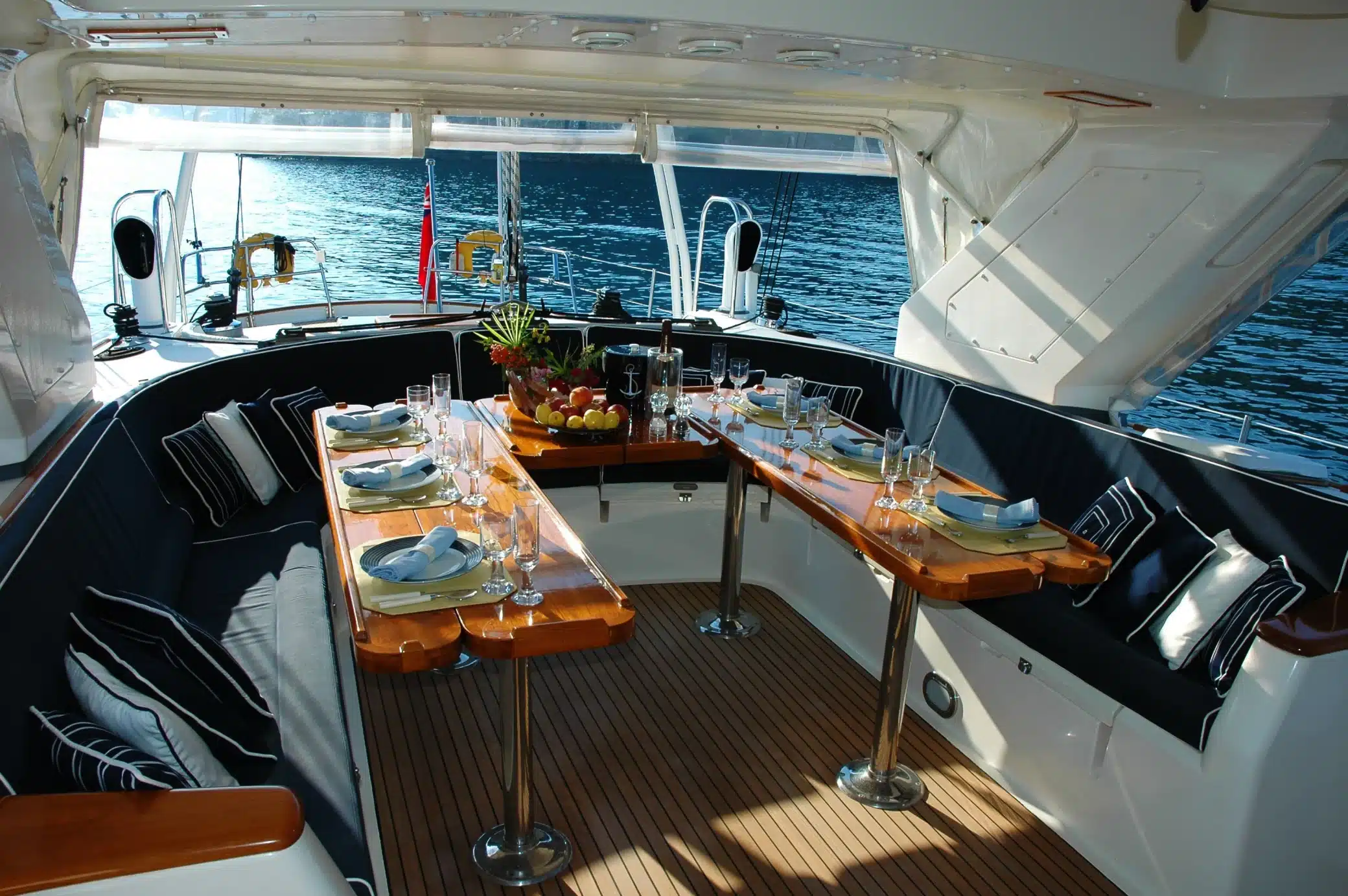
2. Construction and Materials:
– Yacht construction materials range from fiberglass and wood to advanced composites and aluminum alloy.
– High-quality materials, craftsmanship, and attention to detail contribute to higher prices.
– Exotic materials, such as carbon fiber or titanium, can further escalate the cost of construction.
3. Brand and Reputation:
– Well-established yacht builders and renowned brands often have higher prices due to their reputation for quality and innovation.
– Established brands also offer better customer support, warranty options, and potential resale value.
4. Onboard Amenities and Features:
– Yachts are known for their luxurious amenities and features.
– The inclusion of state-of-the-art technology, entertainment systems, spacious cabins, gourmet kitchens, and high-end finishes increases the price.
– Customization options, such as interior design, layout modifications, or specialized equipment, can also impact the final cost.
5. Navigation and Performance:
– The yacht’s performance capabilities, including engine power, fuel efficiency, and range, influence the price.
– High-performance yachts designed for speed or long-range cruising tend to have higher costs.
6. New vs. Pre-owned:
– New yachts typically come with a higher price due to their pristine condition and the latest design and technology features.
– Pre-owned yachts offer a more affordable option, but their price depends on factors like age, condition, and maintenance history.
7. Maintenance and Operating Costs:
– Yacht ownership entails ongoing maintenance, repairs, crew expenses, insurance, docking fees, and fuel costs.
– Considering these operational expenses is crucial when evaluating the overall cost of yacht ownership.
The cost of yachts can widely vary, with smaller yachts costing several hundred thousand dollars ($50,000 or $100,000 small motor yacht), while larger luxury yachts can reach tens or even hundreds of millions of dollars. Pricing is also influenced by market demand, currency fluctuations, and supply availability. Therefore, it is important to carefully assess your budget, preferences, and intended use when determining the affordability and value of a yacht. Consulting with a yacht broker or industry expert can provide additional insights and guidance when it comes to pricing and purchasing yachts.
Travel
www.goodmooddotcom.com Luxury Category: Your Gateway to Upscale Living
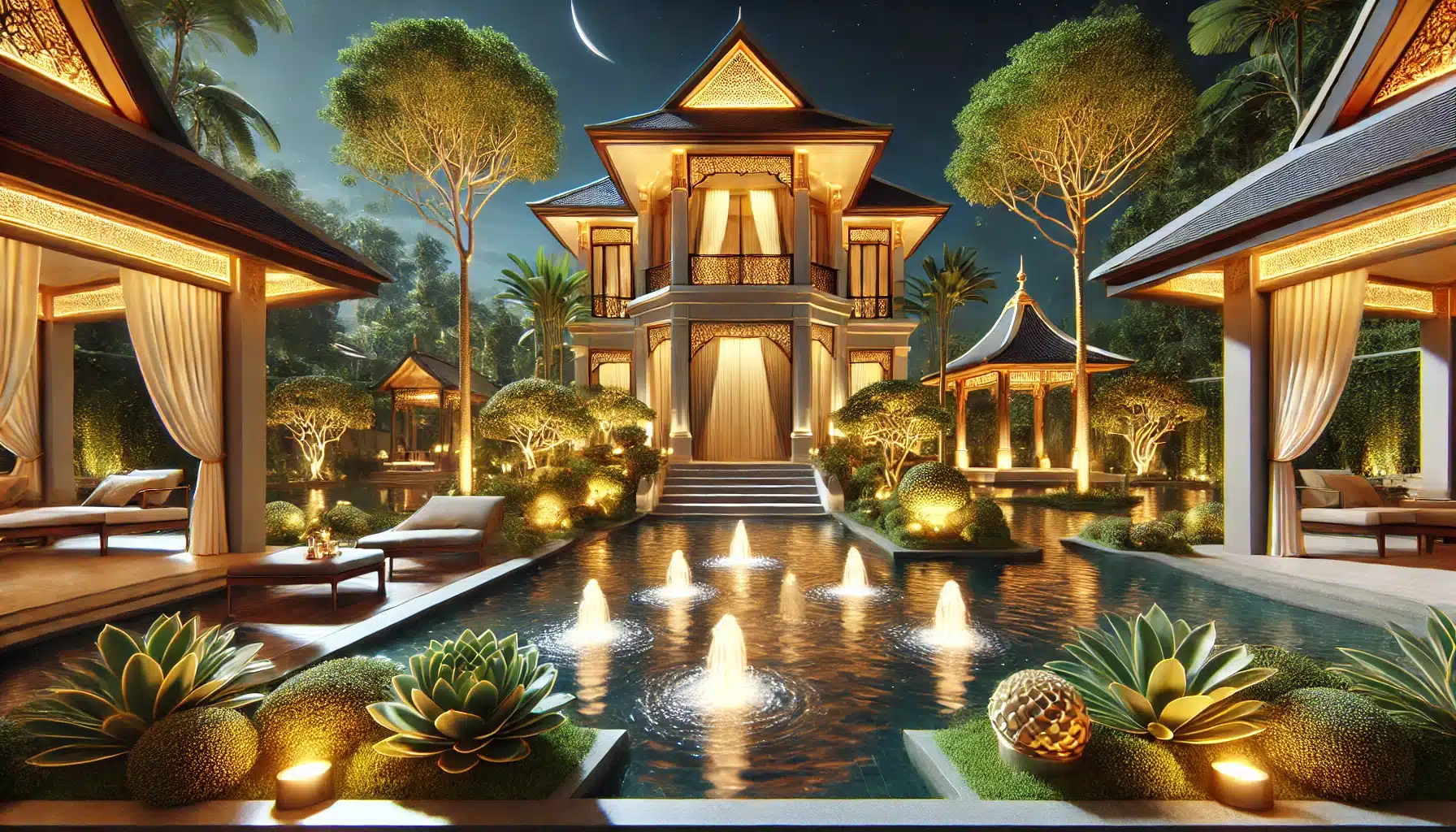
Table of Contents
GoodMoodDotCom is a website designed to inspire and inform its audience about the best of luxury living. One of the standout features of the website is the www.goodmooddotcom.com luxury category, a space dedicated to everything related to high-end travel, exquisite destinations, and exclusive experiences. If you are looking for inspiration or practical advice on how to enjoy the finer things in life, this category is your go-to guide.
What is the Luxury Category?
The Luxury category on GoodMoodDotCom is a section designed to showcase the most lavish experiences from around the world. From luxurious hotels and exotic destinations to once-in-a-lifetime experiences, this category has it all. The purpose of this section is to offer its readers a detailed, inspiring glimpse into what the world’s elite enjoy, from extravagant vacations to refined lifestyle choices.
Here, readers can find articles that highlight luxurious destinations, accommodations, and curated experiences that cater to those who appreciate the finer things in life. Whether you’re looking for dream vacation ideas or just want to escape into a world of opulence, the Luxury category offers a wealth of material to get lost in.
Key Highlights of the Luxury Category
Luxury Travel Destinations
The Luxury category offers a detailed look at some of the most sought-after destinations. For example, readers can explore places like Tulum, Mexico, known for its pristine beaches and exclusive resorts. Articles often cover these locations in depth, highlighting what makes them unique—be it the beaches, culture, or privacy offered at high-end resorts.
Additionally, the site explores other luxurious destinations, such as Australia, where luxury travel options range from private villas to world-class dining and activities. This section presents these places not just as travel spots, but as full experiences waiting to be discovered.
Luxury Accommodations
What’s a luxury vacation without a stay in one of the world’s most exclusive hotels or resorts? The Luxury category features comprehensive reviews and guides on five-star hotels, boutique stays, and extravagant villas. These articles emphasize the lavish amenities provided, from personal butlers and private pools to exquisite spas and fine dining experiences.
Whether it’s a private villa in the Maldives or a historic palace hotel in Europe, GoodMoodDotCom offers an inside look at where to stay for the most comfortable, luxurious experiences.
Exclusive Experiences
It’s not just about the destination or the place you sleep—it’s about the experiences you indulge in. The Luxury category also dives into the types of exclusive activities that are available for those who seek something extraordinary. Whether it’s cruising on a luxury liner across the Mediterranean or attending VIP events like art shows or fashion weeks, the site covers a range of luxury experiences designed to make your vacation unforgettable.
The category features not only popular luxurious activities but also highlights more unique options, like private tours or bespoke cultural experiences tailored to the traveler’s interests.
Audience for the Luxury Category
The Luxury category on GoodMoodDotCom caters primarily to affluent travelers, luxury enthusiasts, and anyone who dreams of experiencing a lavish lifestyle. Whether you’re planning your next getaway or simply exploring what’s possible in the world of luxury, the content is designed to inspire and inform.
However, it’s not just for those with a large budget. Even if you don’t have the means to enjoy every luxury listed, the category provides plenty of ideas for future goals or simply to indulge in daydreams about the possibilities.
Unique Features of GoodMoodDotCom’s Luxury Content
What makes the Luxury category stand out is its ability to mix detailed information with high-quality visuals and a personal touch. The content is not just about showcasing luxurious places—it’s about telling a story. Readers are taken on a journey, from the serenity of a luxury spa to the thrill of a private yacht cruise. Each article is crafted to immerse the reader in a world of elegance and sophistication.
Moreover, the site regularly updates its content, ensuring that you have access to the latest and greatest luxury destinations and experiences. Whether it’s a new luxury resort opening or a hot spot for elite travelers, GoodMoodDotCom keeps its readers up to date.
How to Use the Luxury Category?
Exploring the Luxury category is easy, and there are many ways to make the most of it. You can start by browsing through the various sections, such as the “Destinations,” “Hotels & Resorts,” and “Experiences” pages. Each section offers detailed insights into luxury options around the world.
If you’re planning a trip, you can use the content to help choose your next destination or select an upscale hotel that fits your needs. For those simply looking to dream, the site provides an endless source of beautiful imagery and captivating stories that transport you to the world’s most exclusive spots.
Why Choose GoodMoodDotCom for Luxury Content?
GoodMoodDotCom’s Luxury category stands out for its curated and trustworthy content. The articles are written by experienced travelers who provide insider insights that you can rely on. It’s not just about what looks good—it’s about what truly offers the best experiences.
The site also makes luxury more accessible by presenting detailed, engaging content that appeals to both high-budget travelers and those who enjoy dreaming about luxury experiences. It allows you to explore luxurious options and plan your own dream getaway, even if it’s just an aspiration for now.
Conclusion
The www.goodmooddotcom.com luxury category is more than just a section of the website—it’s an invitation to explore a world of opulence and indulgence. Whether you are planning a lavish vacation or simply looking to get lost in the beauty of high-end destinations, this category has everything you need to fuel your imagination. Take a journey through stunning hotels, serene beaches, and exclusive experiences that make the world of luxury travel truly unforgettable.
FAQs
What kind of destinations can I find in the Luxury category
You’ll find a variety of high-end destinations, including exotic beaches, private islands, and culturally rich cities that cater to luxury travelers.
Are the luxury accommodations reviewed on the site?
Yes, each featured luxury accommodation is carefully reviewed, highlighting key amenities, services, and exclusive experiences available for guests.
How often is the content in the Luxury category updated?
The Luxury category is regularly updated with new articles, ensuring fresh insights on trending destinations, accommodations, and activities.
Can I find budget-friendly luxury options on GoodMoodDotCom?
While the focus is on upscale experiences, there are occasionally more affordable luxury options or tips on enjoying opulence within a reasonable budget.
Is the Luxury category suitable for non-affluent travelers?
Absolutely! Even if you can’t afford all the featured experiences now, the content serves as great inspiration for future luxury travels.
Article Recommendations
11050208253XZ Filtro: A Comprehensive Guide
Understanding 810347200593: An Informative Guide
Does a 5.9 Valve Cover Fit n a 6.7: Modifications and Solutions Explained
Travel
Morocco Desert Tours: Exploring the Mystique of the Sahara

Table of Contents
Embark on a journey of discovery as you delve into the captivating world of Morocco Desert Tours. These immersive experiences offer a glimpse into the rich tapestry of culture, history, and natural beauty that define Morocco’s desert landscapes. Whether you’re drawn to the endless sea of dunes in the Sahara or the rugged terrain of the Atlas Mountains, Morocco’s deserts promise adventure and intrigue at every turn. From camel treks beneath star-studded skies to encounters with nomadic tribes, each moment on a desert tour is filled with wonder and possibility.
The Allure of Morocco’s Desert Landscapes:
Morocco’s desert landscapes hold a magnetic allure that has captivated travelers for centuries. The vast expanse of the Sahara Desert stretches out before you, its shifting sands painting a mesmerizing picture of endless horizons. In contrast, the rocky outcrops and lush oases of the Atlas Mountains provide a striking backdrop to the desert scenery. From the towering dunes of Erg Chebbi to the dramatic canyons of Todra Gorge, each landscape is a testament to the raw beauty and diversity of Morocco’s deserts.
Planning Your Morocco Desert Adventure:
Planning your Morocco desert adventure is an exciting endeavor filled with endless possibilities. Start by determining the duration of your trip and the type of experience you’re seeking, whether it’s a short excursion or an extended expedition into the heart of the desert. Consider factors such as the best time to visit, the level of physical activity involved, and any specific interests or preferences you may have. Research reputable tour operators and carefully review their itineraries to ensure they align with your goals and expectations. With proper planning and preparation, your Morocco desert adventure is sure to be an unforgettable experience.
Popular Destinations: From Marrakech to Merzouga:
Marrakech, with its vibrant souks and ancient medina, serves as the gateway to Morocco’s desert adventures. From here, travelers embark on journeys into the desert, with Merzouga emerging as one of the most popular destinations. Nestled on the edge of the Sahara Desert, Merzouga offers access to towering sand dunes, picturesque oases, and authentic Berber villages. Other notable destinations include the Dades Valley, known for its stunning rock formations, and the oasis town of Zagora, where palm-fringed landscapes beckon travelers to explore.
Activities and Experiences in Morocco’s Deserts:
Morocco’s deserts offer a plethora of activities and experiences to suit every traveler’s interests and preferences. Embark on a camel trek across the dunes, allowing you to immerse yourself in the timeless beauty of the desert landscape. Spend a night under the stars at a traditional Berber camp, where you’ll savor local cuisine and listen to stories by the campfire. For the more adventurous, try your hand at sandboarding down the dunes or embark on a 4×4 off-road adventure through the desert terrain. Cultural experiences abound, from visiting nomadic tribes to exploring ancient kasbahs and caravan routes. Whatever your desires, Morocco’s deserts promise an unforgettable array of activities and experiences for all who dare to venture into their midst.
Cultural Immersion: Meeting Nomadic Tribes and Local Communities:
Embark on Marrakech desert trips that offer unparalleled opportunities for cultural immersion, providing insights into the lives of nomadic tribes and local communities. Encounter the Berber people, the indigenous inhabitants of Morocco’s desert regions, known for their rich traditions and warm hospitality. Share a cup of mint tea with a Berber family in their tent, and gain firsthand knowledge of their nomadic lifestyle, ancient customs, and artisanal crafts. Participate in traditional ceremonies, such as music performances or bread-making sessions, to deepen your understanding of Berber culture and forge meaningful connections with local communities.
Choosing the Right Morocco Desert Tour Operator:
Selecting the right Morocco desert tour operator is essential for ensuring a seamless and enriching travel experience. Look for operators with a reputation for professionalism, safety, and sustainability. Read reviews from past travelers and seek recommendations from trusted sources to gauge the quality of their services. Consider factors such as the variety of tour options, the expertise of guides, and the inclusivity of cultural experiences offered. Opt for operators who prioritize responsible tourism practices and respect for local communities and the environment. By choosing wisely, you can embark on Marrakech desert trips that are not only enjoyable but also ethical and enriching.
Practical Tips for Your Desert Journey:
Prepare for your Marrakech desert trip with these practical tips to ensure a smooth and enjoyable experience. Pack lightweight, breathable clothing suitable for hot desert climates, along with sturdy hiking shoes and sun protection essentials like hats and sunscreen. Carry ample water and snacks to stay hydrated and energized during your excursions. Be mindful of cultural norms and dress modestly, especially when visiting local communities or religious sites. Keep important documents and valuables secure, and always inform someone of your itinerary before venturing into remote desert areas. With proper planning and preparation, you can make the most of your Marrakech desert adventure while staying safe and comfortable.
Safety Precautions in Morocco’s Desert Environment:
While exploring Morocco’s desert environment can be exhilarating, it’s essential to prioritize safety at all times. Be aware of potential hazards such as extreme temperatures, rugged terrain, and limited access to medical facilities in remote areas. Stay hydrated by drinking plenty of water and avoid prolonged exposure to the sun, especially during peak daylight hours. Follow the guidance of experienced guides and adhere to designated trails to minimize the risk of getting lost or encountering dangerous wildlife. Familiarize yourself with basic first aid techniques and carry a well-stocked emergency kit with essential supplies. By taking precautions and exercising caution, you can enjoy the beauty of Morocco’s deserts while minimizing potential risks.
Conclusion:
In conclusion, Marrakech desert trips offer an unforgettable blend of adventure, culture, and natural beauty, providing travelers with the opportunity to immerse themselves in Morocco’s desert landscapes and vibrant communities. Whether embarking on camel treks across the dunes, meeting nomadic tribes, or exploring ancient kasbahs, each moment is filled with discovery and wonder. By choosing reputable tour operators, practicing responsible tourism, and prioritizing safety, travelers can embark on desert journeys that leave a lasting impact while respecting the land and its inhabitants. With its timeless allure and boundless charm, Morocco’s deserts beckon adventurers from around the world to experience the magic of the Sahara firsthand.
Travel
Avoiding Scams: How to Identify the Best Timeshare Resale Companies
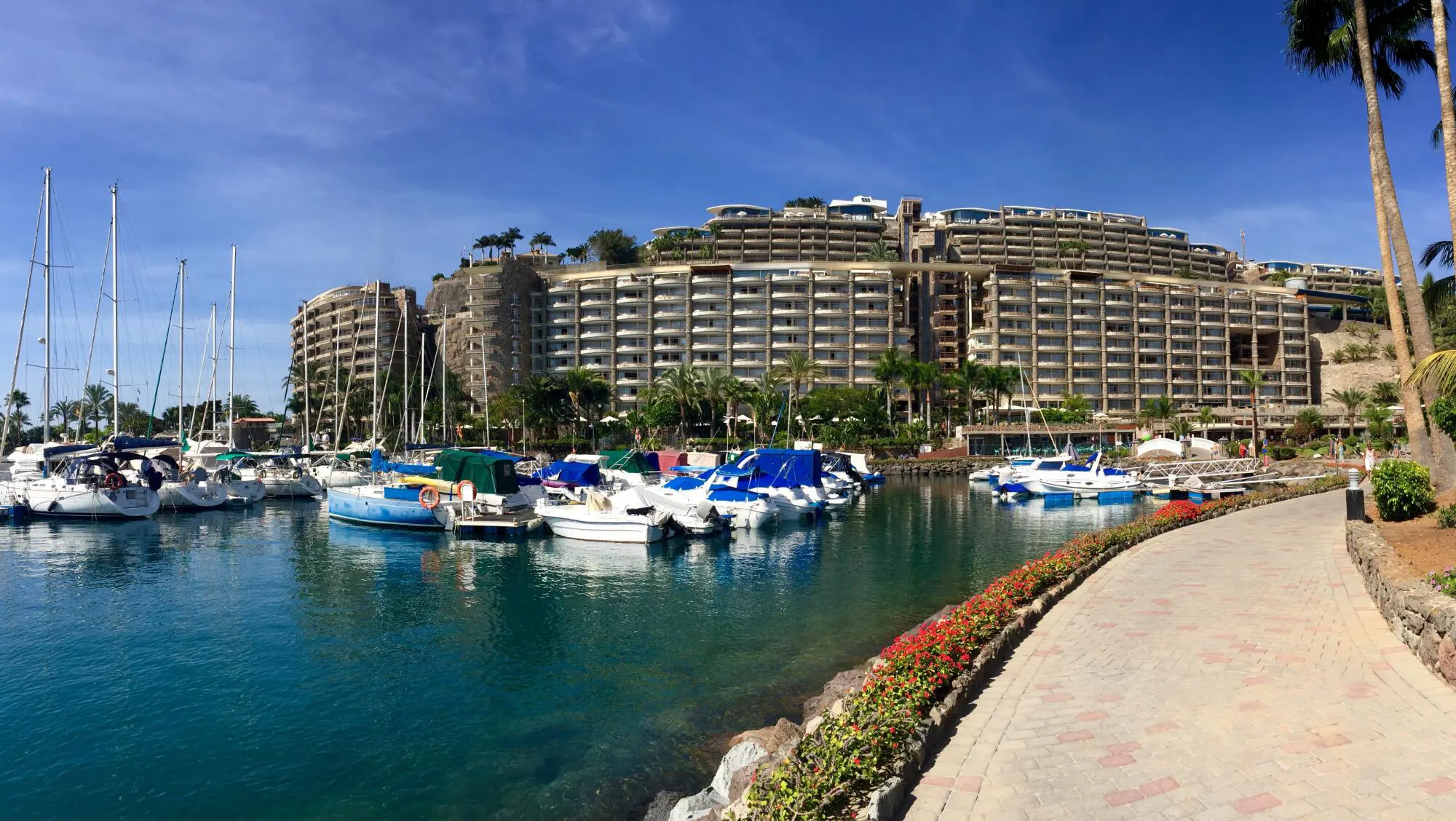
Table of Contents
Buying a timeshare can be an exciting investment. It offers the promise of beautiful annual getaways and a slice of luxury living.
However, for various reasons – from changing lifestyles to evolving financial situations – the need to sell a timeshare may eventually arise. This is where timeshare resale companies come into play.
In this comprehensive guide, we’ll explore crucial steps to identify the best timeshare resale companies. That way, you can be assured of a seamless and secure resale process.
Read on!
Research Company Reputation
When it comes to choosing a timeshare resale company, reputation is everything. Look for companies with positive reviews and ratings from previous clients. You can also check with the Better Business Bureau. See if there have been any complaints filed against the company.
Additionally, consider reaching out to friends or family who may have used a timeshare resale company in the past. Their personal experiences and recommendations can be invaluable in your decision-making process.
Verify Licensing and Accreditation
Trustworthy companies comply with licensing and accreditation requirements. This will help ensure that the company operates legally and follows industry standards.
In the United States, you can check with your state’s Department of Real Estate or Business Regulation for a list of licensed timeshare resale companies. Accreditation from organizations is also a good indicator of a reputable company.
Beware of Upfront Fees
One red flag to watch out for when choosing a timeshare resale company is upfront fees. Reputable companies typically only charge a commission or fee after the sale has been completed successfully. If a company asks for a large upfront payment, it may be a sign of potential fraud.
Moreover, be wary of companies that pressure you into buying additional services or upgrades. These are often unnecessary and can end up costing you more money in the long run. Take note that timeshare scams are prevalent, and it’s crucial to be cautious when dealing with any resale company.
Avoid High-Pressure Sales Tactics
Some timeshare resale companies may use high-pressure sales tactics to convince you to sell your timeshare quickly. This can include offering unrealistically high resale prices or creating a false sense of urgency. Be cautious of these tactics and take the time to research and compare offers from different companies.
Moreover, never feel pressured to decide on the spot. Take your time to carefully consider all options and choose a company that you are comfortable with.
Ask for Legal Documentation
When selling a timeshare, it is crucial to have all legal documentation in order. This includes the deed, title, and any relevant maintenance fee or tax documents. A reputable timeshare resale company should provide transparent and detailed information about the entire sale process.
Be sure to ask for copies of all legal documents and review them carefully before signing anything. If a company is hesitant or refuses to provide these documents, it may be a red flag. If you find timeshare resales at incredible discounts, you can always ask the company to show their financial statements and contract agreements.
Identify the Best Timeshare Resale Companies
In conclusion, choosing the best timeshare resale companies involves thorough research and careful consideration. By following these tips, you can ensure a smooth and secure resale process.
Don’t hesitate to reach out to trusted sources for recommendations and take your time in making a decision. With these steps in mind, you can confidently choose a reputable company to help you sell your timeshare.
-

 Travel4 years ago
Travel4 years agoThe Family of Kirk Passmore Issues a Statement Regarding the Missing Surfer
-

 Technology4 months ago
Technology4 months agoManyroon: The Key to Unlocking Future-Proof Business Solutions
-

 Cryptocurrency1 year ago
Cryptocurrency1 year agoBest Tips For Cryptopronetwork com Contact 2024
-
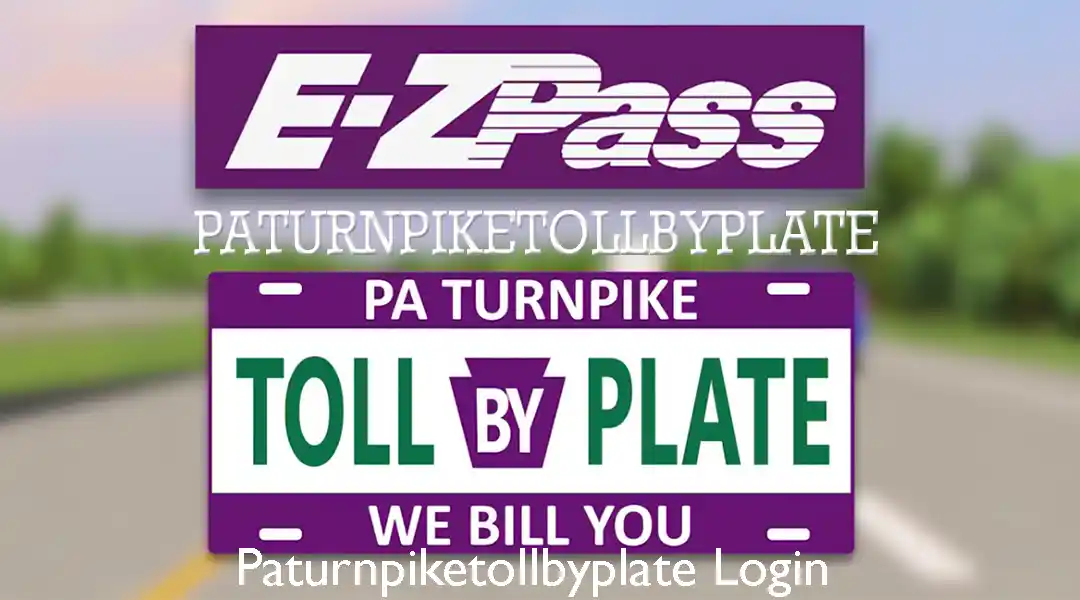
 Technology3 years ago
Technology3 years agoPaturnpiketollbyplate Login & Account Complete Guide Paturnpike.com
-

 Apps & Software2 years ago
Apps & Software2 years agoFapello 2023: Social Media Platform for NSFW Content
-

 Law3 years ago
Law3 years agoShould I Hire a Lawyer For My Elmiron Case?
-

 Business4 months ago
Business4 months agoCoyyn.com Gig Economy: Smart Contracts and Fair Payments for Freelancers
-

 Business4 months ago
Business4 months agoAcumen: The Key to Smart Decision-Making and Success






